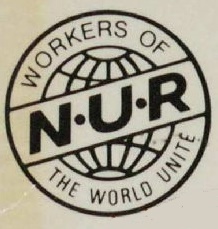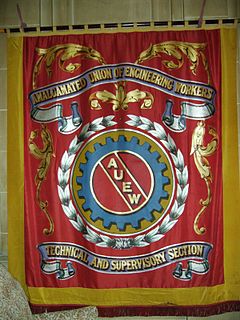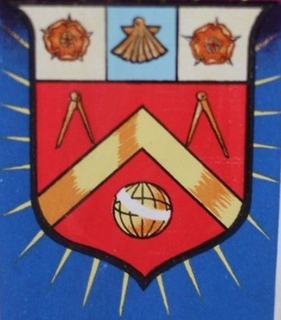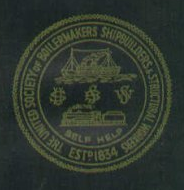Related Research Articles

The Transport Salaried Staffs' Association (TSSA) is a trade union for workers in the transport and travel industries in the United Kingdom and Ireland. Its head office is in London, and it has regional offices in Bristol, Derby, Dublin, Manchester, York and Glasgow.

The Associated Society of Locomotive Engineers and Firemen (ASLEF) is a British trade union representing train drivers. It is part of the International Transport Workers' Federation and the European Transport Workers' Federation. At the end of 2018 ASLEF had 22,424 members. Its current General Secretary is Mick Whelan.

The National Graphical Association (NGA) was a trade union representing typographers and related workers in the United Kingdom.

The National Union of Railwaymen was a trade union of railway workers in the United Kingdom. The largest railway workers' union in the country, it was influential in the national trade union movement.

The Technical, Administrative and Supervisory Section (TASS) was a British trade union.

The Association of Professional, Executive, Clerical and Computer Staff (APEX) was a British trade union which represented clerical and administrative employees.

The Iron and Steel Trades Confederation (ISTC) was a British trade union for metal-workers and allied groups, being the largest union in these fields. It was formed on 1 January 1917 as a merger of existing steel-workers' unions and it is now part of Community.

The Amalgamated Engineering Union (AEU) was a major British trade union. It merged with the Electrical, Electronic, Telecommunications and Plumbing Union to form the Amalgamated Engineering and Electrical Union in 1992.

The National Union of Agricultural and Allied Workers (NUAW) was a trade union in the United Kingdom which existed between 1906 and 1982. It represented farmworkers.

The National Society of Operative Printers and Assistants (NATSOPA) was a British trade union.

The Amalgamated Society of Woodworkers (ASW) was a British trade union representing carpenters, joiners and allied trades. The ASW was formed in 1921 by the amalgamation of two smaller unions. It was itself merged into the Union of Construction, Allied Trades and Technicians in 1971.

The Amalgamated Society of Boilermakers, Shipwrights, Blacksmiths and Structural Workers (ASB) was a trade union in the United Kingdom. Many of its members worked in shipbuilding, in which industry it was the leading trade union, while over time it also developed strength in engineering and construction.

The National Union of Distributive and Allied Workers (NUDAW) was a trade union in the United Kingdom.

The Amalgamated Union of Building Trade Workers (AUBTW) was a British trade union.

The National Union of Boot and Shoe Operatives (NUBSO) was a trade union in the United Kingdom which existed between 1873 and 1971. It represented workers in the footwear industry.
The United Textile Factory Workers' Association (UTFWA) was a trade union federation in Great Britain. It was active from 1889 until 1975.
This article lists the Labour Party's election results in elections from it adopting the "Labour Party" name in 1906 until the end of the 1918 to 1922 Parliament.

The Electrical Trades Union (ETU) was a trade union representing electricians in the United Kingdom, much of its membership consisting of wiring fitters and telephone engineers.
This article lists the Labour Party's election results from the 1929 United Kingdom general election until 1945, including by-elections.
This article is about the sponsorship of British Members of Parliament by mining trade unions.
References
- Arthur Marsh, Victoria Ryan and John B. Smethurst, Historical Directory of Trade Unions
- Albert Edward Musson, The Typographical Association: Origins and History Up to 1949
- Specific
- ↑ Musson, A. E. (1954). The Typographical Association . London: Oxford University Press. p. 351.
- ↑ Labour Party, Report of the Forty-Fifth Annual Conference of the Labour Party, p.78
- ↑ "List of Labour Candidates and Election Results, May 30th, 1929". Report of the Annual Conference of the Labour Party: 24–44. 1929.
- ↑ "List of Endorsed Labour Candidates and Election Results, October 27, 1931". Report of the Annual Conference of the Labour Party: 11–27. 1931.
- 1 2 "List of Endorsed Labour Candidates and Election Results, November 14, 1935". Report of the Annual Conference of the Labour Party: 8–23. 1935.
- 1 2 Labour Party, Report of the Forty-Fifth Annual Conference of the Labour Party, pp.232-248
- 1 2 "List of Parliamentary Labour candidates and election results, February 23rd, 1950". Report of the Forty-Ninth Annual Conference of the Labour Party: 179–198. 1950.
- ↑ "List of Parliamentary Labour candidates and election results, 25th October, 1951". Report of the Fiftieth Annual Conference of the Labour Party: 184–203. 1951.
- ↑ Labour Party, Report of the Fifty-Fourth Annual Conference of the Labour Party, pp.255-275
- ↑ Labour Party, Report of the Fifty-Eighth Annual Conference of the Labour Party, pp.179-201